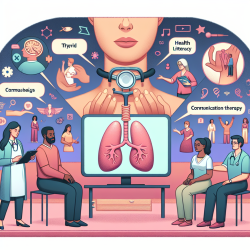As practitioners in the field of speech-language pathology, understanding the nuances of youth self-harm is crucial for developing effective intervention strategies. A recent study, "Do attachment-related differences in reflective functioning explain associations between expressed emotion and youth self-harm?" offers valuable insights that can enhance our approach to therapy.
Research indicates that youth self-harm is significantly associated with expressed emotion (EE) from caregivers, attachment insecurity, and reflective functioning (RF). The study by Kennedy-Turner et al. (2022) evaluated how perceived caregiver EE (pEE) affects youth self-harm through attachment insecurity and RF uncertainty (RFu). Their findings highlight the importance of considering family emotional climate and attachment representations in clinical practice.
Key Findings and Implications for Practitioners:
- Gender-Specific Effects: The study found that pEE from female caregivers indirectly affects youth self-harm through attachment anxiety and RFu. Conversely, pEE from male caregivers had a direct effect on self-harm. This suggests that intervention strategies may need to be tailored based on the caregiver's gender.
- Attachment Anxiety and RFu: Attachment anxiety and RFu were significant mediators between pEE and youth self-harm, especially in relationships with female caregivers. This underscores the need for therapeutic approaches that enhance attachment security and reflective functioning.
- Family Systems Approach: The findings emphasize the importance of involving caregivers in therapy. Training caregivers in supportive communication and addressing high EE can improve attachment security and reduce self-harm risk.
Practical Steps for Implementation:
- Assessment: Use validated tools to assess pEE, attachment security, and RF in your clients. This can provide a comprehensive understanding of the family dynamics at play.
- Caregiver Involvement: Educate caregivers on the impact of their communication style and provide training on supportive, non-critical communication.
- Therapeutic Interventions: Incorporate Mentalization-Based Therapy (MBT) and attachment-based interventions to improve RF and attachment security in youth.
Encouraging Further Research:
While this study provides a strong foundation, further research is needed to explore the long-term effects of these interventions and the potential differences in same-gender versus opposite-gender caregiver-child dyads. Practitioners are encouraged to contribute to this growing body of knowledge by conducting longitudinal studies and sharing their findings.
To read the original research paper, please follow this link: Do attachment-related differences in reflective functioning explain associations between expressed emotion and youth self-harm?










